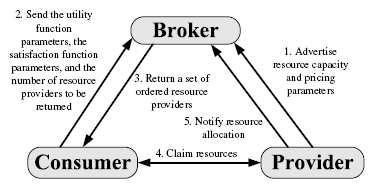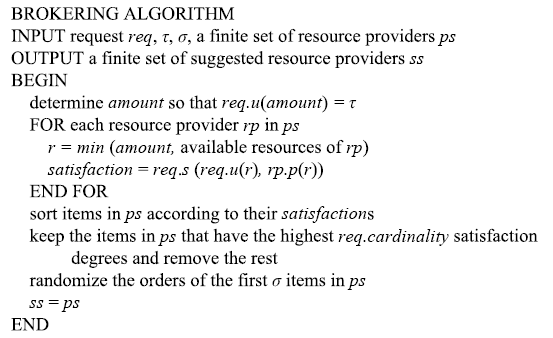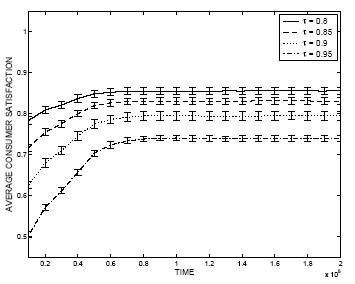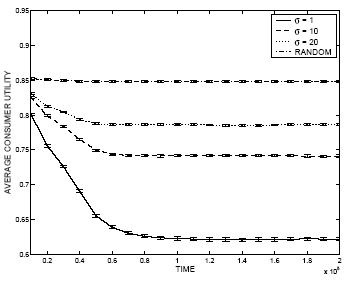A Utility- and Price-Based Resource Allocation
Model for Large-Scale Distributed Systems
Computational, data, and service grids, peer to peer systems,
and wireless communication systems are examples of open systems
where the distinction between providers and consumers of resources
is blurred. Individual members of the community contribute computing
cycles, storage, services, and communication bandwidth to the
pool of resources available to the entire community. While the
popularity of such systems increases, their resource management
models seldom take into account the utility for the consumers
of the resources, and the incentives to provide resources. We
propose a resource allocation model which takes into account the
utility of the resources for the consumers and the pricing structure
imposed by the providers.
We use: (i) a utility function, 0<u(r)<1,
to represent the utility provided to an individual consumer, where
r represents the amount of allocated resources; (ii) a
price function, p(r), imposed by a resource
provider, and (iii) a satisfaction function, s(u(r),
p(r)), 0<s<1, to quantify the level
of satisfaction; the satisfaction depends on both the provided
utility and the paid price.
The utility function could be a sigmoid

where ζ and ω
are constants provided by the consumer , ζ>2,
and ω>0. Clearly, 0<u(r)<1
and u(ω) =1/2.
The price could be a linear function of the amount of resources:

where  is the unit
price. is the unit
price.
The satisfaction function could be:

where Κ, μ,
and ε are appropriate positive
constants.
Figure 1 shows the utility- and price-based resource allocation
model involving a broker and consumers and providers of resources.
In this model, the broker mediates between the selfish interests
of the producers and the providers, and societal interests, such
as efficient resource utilization in the system, through some
parameters, i.e., the target utility (τ)
and the satisficing choices (σ).

Figure 1. The utility- and price-based resource allocation model.
The algorithm performed by the broker is shown in Figure 2.

Figure 2. The brokering algorithm performed by the broker.
We conducted a simulation for the utility- and price-based resource
allocation model in the YAES simulation environment. The simulation
results (e.g., Figure 3 and Figure 4) show the behavior of the
system with respect to various parameters.

Figure 3. Average consumer satisfaction vs. time (in seconds).

Figure 4. Average consumer utility vs. time (in seconds).
Author:
Xin Bai (xbai@cs.ucf.edu)
Package:
yaes.application.gridbrokerage, yaes.application.gridbrokerage2,
and yaes.application.gridbrokerage3. |